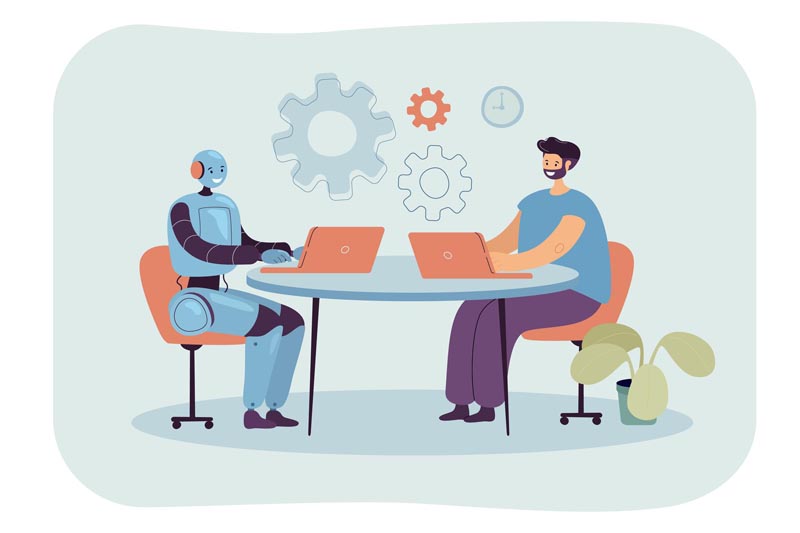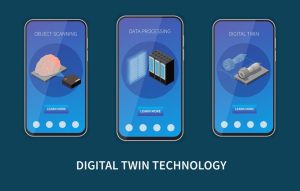In 2018, the increase in machine learning made a big splash. It has the potential to be a powerful way to make people smarter, so it is no longer something from the future. Businesses that sell to both businesses and consumers have found it helpful to drive better business results, such as creating influential content, increasing paid conversions, and lowering marketing costs.
Machine learning means allowing computers to do things without help from people. The technology concentrates on creating computer programs that can access and learn from data for future use.
Let’s look at how to get good at Machine Learning Technology.
Before placing a Machine Learning Model into production, it must be possible to train, test, and validate it. Getting data ready for analytics speeds up machine learning and data science projects, giving business customers a more immersive business experience. This automates the pipeline from data to insights, which comprises the six steps listed below.
Data gathering
Collecting data in Machine Learning is very important because the amount and quality of the data will determine how nice the analytical model will be. The different files must be put together into one single file. The information is put into a table and given the name Training Data.
Filter Data
The step involves putting the data correctly and getting it ready for use. Randomizing the order of data is done to ensure that the order doesn’t change the predicted results.
Analyze the data
The data cleaning up is then looked at to see if it can be used for machine learning. Later, the data is split into training sets and evaluating sets. This step is about eliminating duplicates, fixing errors and missing values, normalizing the data, changing the data type, etc.
Train the Models
A particular algorithm is made to do a certain job. This step is very important because it involves making the very important choice of which algorithm to use for a model. The model has been trained so that it gives accurate results. The goal of training the model is to answer a question or make a prediction as often as possible. The iteration process describes every move of the training.
Evaluate Model
Several metrics are used to measure how well the model works. The model is tested on data that has never been used before. This helps tune the model better.
Parameter Tuning
After evaluating the algorithm, the parameters are changed to make it better. It has several training steps, a learning rate, initial values, a distribution, and a learning rate.
Make Forecasts
The last step is to make a prediction, which answers a few questions. You can finally determine if the ML model predicts what will happen. It gives a rough idea of how well the model will work in the real world.
Commonly Used Algorithms for Machine Learning
As the world moves toward digital transformation, technology has made it possible for big tech companies to compete for the best data scientists. The main target is to let computers learn independently, without human help, and change their actions accordingly. Every year, more and more money is put into technology. Several algorithms in the technology can be used to solve almost any kind of data problem.
Let’s look closely at the different Machine Learning algorithms.
Linear Regression
The Supervised Learning algorithm of Machine Learning is what Linear Regression is based on. Based on a continuous variable, the algorithm estimates true values like the house cost, the number of calls, etc. (S). Most of the time, it is used to find the relationships between variables by trying to fit the best line. This line is called a regression line, shown by the equation Y = a * X + b.
The following variables are used to train the model:
- X: input training data
- Y: labels to data (supervised learning)
During training, a model fits the best line to anticipate the value of y given a value of x. Find the values of a and b to find the best regression line.
- a: coefficient of X
- b: intercept
Logistic Regression
Logistic Regression is not a regression formula but a monitored classification algorithm. It helps figure out discrete values like 0/1, yes/no, and true/false based on a set of independent variables (s). For a given set of values for the input variable x, the output vector y can only predict discrete values.
It is also called logit regression because it fits information to a logit function to determine how likely something will happen. Its output is a number between 0 and 1, showing how likely something is. A sigmoid function is used to model the data.
Logistic Regression is known as:
- Binomial: The value of the target variable can only be “0” or “1.”
- Multinomial: Variable has 3 or even more variables. It means that the numbers don’t matter.
- Ordinal: The categories in the target variables are in order. For example, “very poor,” “poor,” “good,” “very good,” and “excellent” are all ways to describe a performance score.
The Decision Tree
A decision tree is a managed learning algorithm often used to sort things into groups. It can be used for dependent variables that are both categorical and continuous. The algorithm is shown as a tree, where each leaf node portrays a class label, and each internal node represents an attribute. It can show how the Boolean function works.
To be made assumptions while utilizing a decision tree.
- At first, the entire training set is thought of as a root.
- The feature values are considered definite, and the continuous values are broken up into discrete ones before the model is built.
- Records are passed around in a loop based on the attributes’ values.
- Statistics determine the order of attributes as origins or internal nodes.
kNN (k- Nearest Neighbors)
Many people use the algorithm to solve classification problems, but it can also be used to solve regression problems. It is an easy algorithm that stores all available cases and sorts new cases based on how their k neighbors vote. Distance functions like Euclidean, Manhattan, Minkowski, and Hamming distance are used to determine the K-nearest neighbor. If K = 1, the case is put in the class of the case that is closest to it.
Things to consider when picking kNN:
- It isn’t easy to figure out what to do.
- Variables must be made equal.
- Works better in the pre-processing phase before moving on to the kNN outlier, noise removal.
K-Means
K-means is a form of an unsupervised algorithm that is used to solve the clustering problem. The next step is to group the given data set into several clusters. The data points in the cluster are alike and different from those in the peer groups. In K-means, each group has its center. The total square value for that cluster is the total of the squares of the variance between the centreline and the data points. The cluster solution is found by adding up the square values for each cluster.
Creating clusters:
- For each centroid, the algorithm chooses k points.
- Each point of data forms a group with the closest centroid.
- The center of each cluster is found based on an existing member of the cluster. There are new center points.
- After a new centroid has been formed, steps 2 and 3 are done again. Please find out how far away each data point is from the new centers and link it to a new k-cluster. Repeat the steps until the centers of mass don’t move anymore.



